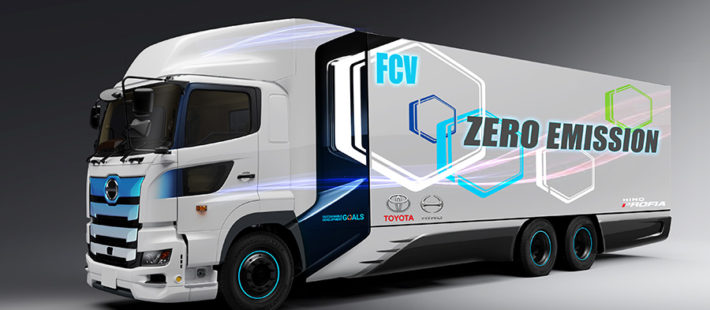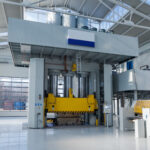Toyota Motor Corporation (Toyota) and Hino Motors, Ltd. (Hino) have agreed to jointly develop a heavy-duty fuel cell truck, and to proceed with initiatives toward its practical use through verification tests and other means.
An agreement to reduce CO2
Toyota and Hino are determined to take proactive action toward resolving global environmental issues as one of the most important corporate tasks. The two companies have declared ambitious goals to reduce CO2 emissions by 2050 and are developing electric vehicle technologies for widespread use in society. In order to achieve further reductions in CO2 emissions, major improvements will be required in the environmental performance of heavy-duty trucks, which account for about 60 percent of the total CO2 emissions from commercial vehicles in Japan.
For the electrification of commercial vehicles, the optimum powertrain must be adopted to ensure both outstanding environmental performance and just-right practicality as a business vehicle in terms of cruising range, load capacity, and other aspects depending on the usage. Heavy-duty trucks are typically used for highway transportation; therefore, they are required to have sufficient cruising range and load capacity as well as fast refueling capability. For this reason, fuel cell vehicles that run on hydrogen with its higher energy density are considered effective.
Heavy-duty fuel cell truck project
The heavy-duty fuel cell truck in this joint development project is based on Hino Profia, and is being developed taking maximum advantage of the technologies both Toyota and Hino have cultivated over the years. The chassis is specially designed with the optimum packaging for a fuel cell vehicle, and steps are being taken through comprehensive weight reduction to ensure a sufficient load capacity. Furthermore, the powertrain is equipped with two Toyota fuel cell stacks that have been newly developed for Toyota’s next Mirai and includes vehicle driving control that applies heavy-duty hybrid vehicle technologies, developed by Hino. Also, cruising range will be set at approximately 600 km, aiming to meet high standards in both environmental performance and practicality as a commercial vehicle.
The Class 8 trucks Toyota is developing in the U.S.-based Portal Project also use two Toyota fuel cells as well as four 700 bar (70 MPa) Type IV hydrogen storage tanks made using composites to power a Kenworth T660 truck. The composite tanks were developed and manufactured by Hexagon Composites ASA (Alesund, Norway) and its subsidiary Agility Fuel Solutions (Costa Mesa, Calif., U.S.). Five of the 10 trucks planned in this project have been built and are in testing.
Hydrogen: the energy source of the future
Toyota and Hino have positioned hydrogen as an important energy source for the future and have worked together on developing technologies and spreading and innovating fuel cell vehicles for over fifteen years since their joint demonstration trials of the fuel cell bus in 2003. Going forward, Toyota and Hino will further strengthen its partnership and accelerate efforts toward the realization of a hydrogen society.












